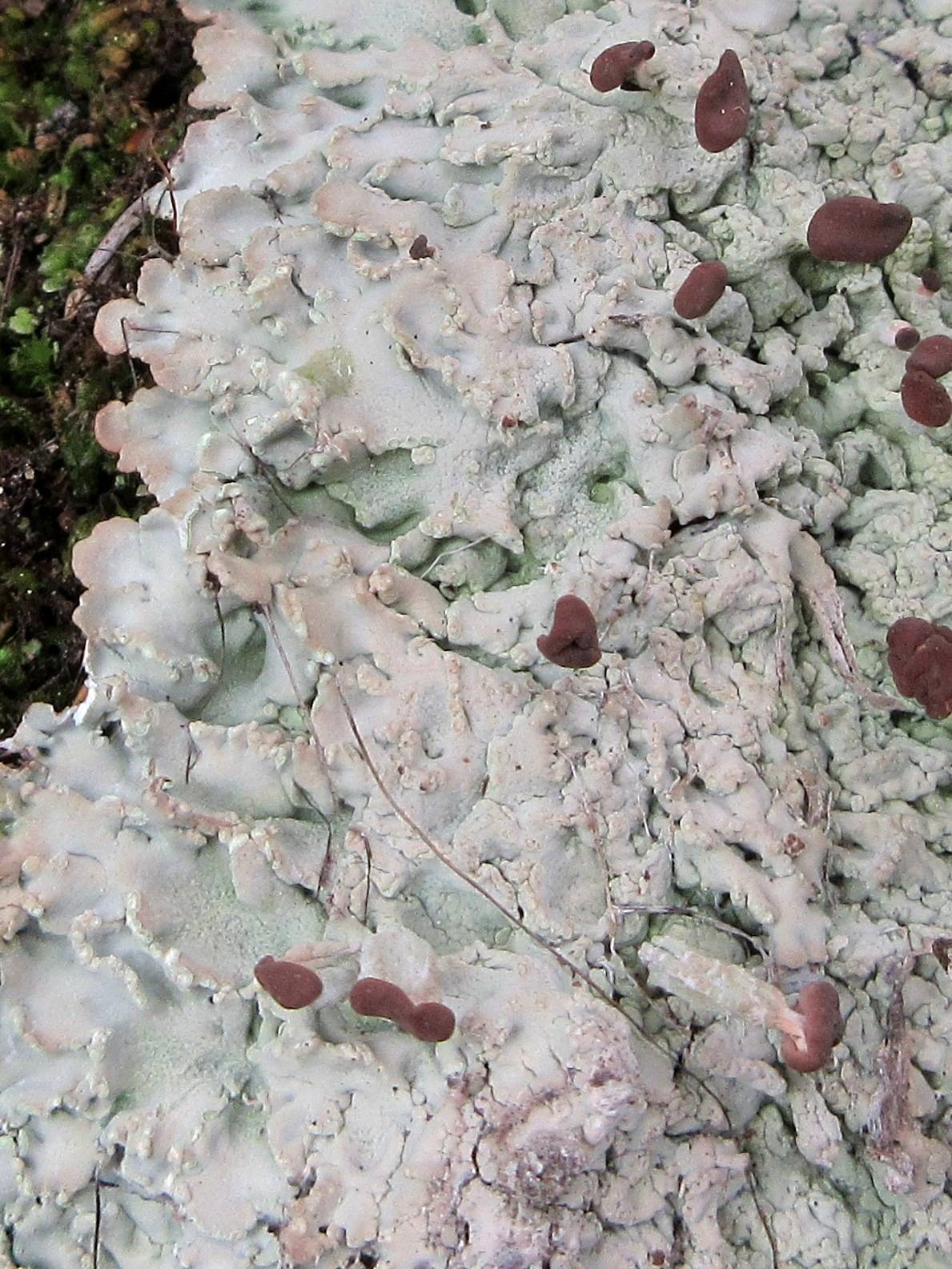
Consortium of Lichen Herbaria
- building a Global Consortium of Bryophytes and Lichens as keystones of cryptobiotic communities -
- Home
- Search
- Images
- Species Checklists
- US States: O-Z >
- US National Parks
- Central America
- South America
- US National Parks
- Southern Subpolar Region
|
Family: Baeomycetaceae |
Nash, T.H., Ryan, B.D., Gries, C., Bungartz, F., (eds.) 2002. Lichen Flora of the Greater Sonoran Desert Region. Vol 1. Life habit: lichenized Primary thallus: crustose, granular, verrucose or subsquamulose to squamulose, or marginally almost foliose upper surface: usually brown, gray, or olivaceous, ± continuous; soralia sometimes present; schizidia when present discoid, detachable cortex: with one or more pseudoparenchymatous layers or of interwoven hyphae running ± parallel to the upper surface photobiont: primary one a chlorococcoid alga, secondary photobiont absent; forming a zone at least in the primary thallus lower surface: without special structures Secondary thallus: composed of short stipes (mostly under 2 cm tall), erect, usually unbranched, solid; Ascomata: apothecial, borne terminally, 1-several, terminal on stipes, or sometimes almost sessile; disc: pale to dark brown or reddish brown (rarely pinkish), roundish, concave to flat and marginate at first, later swollen and with reflexed margins, often clustered, usually (at least the clusters) distinctly larger than diam. of the stipe; thalline exciple: absent asci: narrow, unitunicate, thin-walled, the apex truncated, with a single functional wall layer, I-, K/I-, 8-spored ascospores: ellipsoid, obtuse at the poles, simple to indistinctly 1-septate, without an endospore thickening, 8-14 x 2-4 µm Conidiomata: pycnidial, immersed in small warts on the thallus conidia: short, bacilliform Secondary metabolites: ß-orcinol depsidones Geography: cosmopolitan, circumpolar, arctic to tropical regions and Australasia Substrate: acidic rocks or soils, bryophytes, detritus; characteristic of temporary and recently disturbed sites. Notes: The genus is usually easily recognized (when fertile) by the ± pale brown, often convex and swollen apothecia usually on rather short and slender, solid stipes, arising from ± crustose (to minutely squamulose or lobate) thallus, growing on soil or rock. It differs from Cladonia especially in that the stalks are solid and its basal squamules, if present, are mostly tightly appressed and often fused. If the stipes are absent, the genus might be confused with various other crustose genera with ± pale biatorine apothecia. Species with distinctly pinkish apothecia, an amyloid hymenium, a different ascal structure, and containing depsides rather than depsidones, have now been placed in the genus Dibaeis. The statement by Thomson (1984) that B. roseus (= Dibaeis baeomyces) is the type species of the genus Baeomyces is now incorrect, because that species is the genus type for Dibaeis. |
Powered by Symbiota









